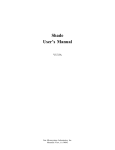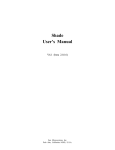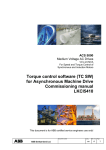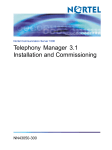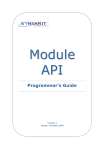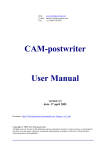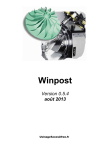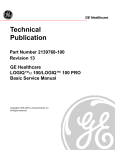Download sun Introduction to Shade
Transcript
sun
microsystems
Introduction to Shade
Sun Microsystems, Inc.
·
2550 Garcia Avenue
·
Mountain View, CA 94043
·
415-960-1300
V5.33A last modified 25/Jun/97
Copyright 1998 Sun Microsystems, Inc. 901 San Antonio Road, Palo Alto, California 94303, U.S.A. All rights reserved.
This product or document is protected by copyright and distributed under
licenses restricting its use, copying, distribution, and decompilation. No part of
this product or document may be reproduced in any form by any means without
prior written authorization of Sun and its licensors, if any.
Parts of the product may be derived from Berkeley BSD systems, licensed from
the University of California. UNIX is a registered trademark in the U.S. and
other countries, exclusively licensed through X/Open Company, Ltd.
Sun, Sun Microsystems, Sun Microelectronics, the Sun Logo, Solaris, and
SunOS are trademarks or registered trademarks of Sun Microsystems, Inc. in the
U.S. and other countries.
All SPARC trademarks are used under license and are trademarks or registered
trademarks of SPARC International, Inc. in the U.S. and other countries. Products bearing SPARC trademarks are based upon an architecture developed by
Sun Microsystems, Inc.
U.S. Government approval required when exporting the product.
RESTRICTED RIGHTS: Use, duplication, or disclosure by the U.S. Govt is
subject to restrictions of FAR 52.227-14(g) (2)(6/87) and FAR 52.227-19(6/87),
or DFAR 252.227-7015 (b)(6/95) and DFAR 227.7202-3(a).
DOCUMENTATION IS PROVIDED "AS IS" AND ALL EXPRESS OR
IMPLIED CONDITIONS, REPRESENTATIONS AND WARRANTIES,
INCLUDING ANY IMPLIED WARRANTY OF MERCHANTABILITY, FITNESS FOR A PARTICULAR PURPOSE OR NON-INFRINGEMENT, ARE
DISCLAIMED, EXCEPT TO THE EXTENT THAT SUCH DISCLAIMERS
ARE HELD TO BE LEGALLY INVALID.
Contents
Chapter 0 Introduction ..........................................................................................................
1
Chapter 1 Example
3
..................................................................................................................
Chapter 2 Getting Started
7
...................................................................................................
Chapter 3 Running and Tracing
....................................................................................
11
Chapter 4 Conflicts of Interest ........................................................................................
23
− iii −
Contents — Continued
− iv −
0
Introduction
What is Shade?
Shade links instruction set simulation and trace generation with custom trace
analysis. It finds uses in such areas as computer architecture, microarchitecture,
or compiler evaluation where detailed, dynamic, instruction-level information is
needed.
Shade tends to run fast because:
1.
Shade (the tracer), the application (the tracee), and the analyzer (the trace
user) all reside within the same process, which reduces the I/O and context
switch overhead associated with file or pipe based trace delivery.
2.
Shade dynamically translates the application code into host machine code
(adding tracing code) which is directly executed to simulate (emulate) and
trace the application code. This new code is cached to minimize translation
overhead.
3.
The analyzer can control how much trace information to collect and when to
collect it.
The result is that for reasonably interesting analyzers, application simulation and
tracing is nearly free.
Other features include:
1.
Multiple, distinct applications may be run sequentially within a single Shade
job. This eliminates the need to combine (by hand, awk, etc.) results for
each command of multiple-command benchmarks.
2.
Tracing is extensible. The analyzer can arrange for its own trace collection
functions to be called before and/or after an application instruction is run.
These functions have complete access to the application’s state including
memory and registers, and can collect information that Shade hasn’t been
preprogrammed to collect.
3.
Many of the conflicts of interest that arise because the application and
analyzer reside within the same process (e.g. I/O, signal handling, storage
allocation) are dealt with in some manner to reduce interference.
sun
microsystems
1
2
Some History
Shade grew out of work done in the late 1980’s by Peter Hsu, late of Sun
Microsystems. A system called Shadow then exhibited the distinguishing
features of what later became Shade: application/analyzer coresidence, and
dynamic code translation. Before Hsu’s departure, work on code translation
caching had also begun.
Shade is a new and improved Shadow. It takes the best of Hsu’s Shadow, and
adds an improved user interface, and increased robustness and efficiency.
Versions
Shade currently comes in four varieties. There are versions to analyze SPARC
v8 code and to analyze SPARC v9 code. There are also versions to analyze
applications compiled on the old SunOS (4.x) systems and on the newer Solaris
(5.x) systems. The SunOS versions run only on SunOS hosts and the Solaris versions run only on Solaris hosts. However, the SPARC v8 and v9 versions run on
either SPARC v8 or v9 hosts.
The interfaces to all four Shade versions are very similar, and this document
applies to all of them. Most of the interface differences exist to support the 64bit registers on SPARC v9. These differences are described below where
appropriate.
Examples
All of the example programs in this document are distributed on-line with the
Shade kit. The eg directory of the kit contains the sources for the examples and
a makefile to build and run them.
Shortcomings
Roughly in order of increasing likelihood of being fixed ever:
Upcoming
1.
Shade cannot run the kernel.
2.
Shade cannot run multiprocessor applications.
Subsequent chapters contain:
Example. Contains a short Shade analyzer for the reader to try out, complete
with source, and compiling and running instructions.
Getting Started. Describes how Shade analyzers get started, and get command
line arguments and environment. Describes how Shade analyzers start application programs and give them command line arguments and environment.
Running and Tracing. Describes how a Shade analyzer runs an application program while collecting and utilizing instruction trace information.
Conflicts of Interest. Describes how to share some per-process resources
between analyzer and application programs: memory allocation, I/O, and signal
handling.
sun
microsystems
Introduction
References
‘‘Shade User’s Manual.’’ UNIX manual pages for Shade analyzers and library
functions.
‘‘SpixTools User’s Manual.’’ UNIX manual pages for SpixTools, upon which
Shade is based.
‘‘Introduction to SpixTools.’’ SpixTools Tutorial.
The SPARC Architecture Manual, Version 8. SPARC International, Inc.
The SPARC Architecture Manual, Version 9. SPARC International, Inc.
Acknowledgements
Thanks to Peter Hsu of course for Shadow. Thanks to David Keppel for implementation ideas. Thanks to Steve Richardson and Malcolm Wing for user interface, documentation, and debugging ideas.
sun
microsystems
3
4
sun
microsystems
1
Example
This chapter shows how to construct and run a simple Shade analyzer.
Analyzer Source Code
Suppose you wish to know how often one of the operands is zero when executing
an integer add instruction. Shade can do this by examining each add instruction
as an application executes. Figure 1.1 shows such a Shade analyzer for SPARC
v8. Figure 1.2 shows a SPARC v9 version.
shade_main
Execution of the analyzer begins at shade_main. Shade makes any analyzer
command line arguments and environment variables available to the analyzer via
arguments to shade_main. (Here, for simplicity, no command line arguments
are expected, nor checked.)
shade_trctl_trsize
shade_main begins by specifying what trace information is desired. The
Trace structure defined in trace.h defines the layout of instruction trace
information for a single executed instruction. Trace may be customized to a
degree by the user. Here TR_REGS was defined prior to including trace.h to
provide storage space for integer register values. The size of the resulting
Trace structure is supplied to Shade in the call to shade_trctl_trsize.
shade_trctl_ih
By default, no instruction trace information is collected. The user must explicitly
specify what information is to be collected for each opcode (or opcode group).
Here, shade_trctl_ih is used to specify collection of the same information
for each of four opcodes (ADD, ADDX, ADDcc, and ADDXcc on SPARC v8;
ADD, ADDC, ADDcc, and ADDCcc on SPARC v9). The IH_ values (defined
in ihash.h) are small integers, each representing a particular opcode.
The second and third shade_trctl_ih arguments specify that tracing should
be enabled for the opcode, except if the instruction is annulled. The fourth argument is a bit mask specifying that the instruction text, and rs1 and rs2 register
contents (not register numbers) should be saved for each add opcode.
shade_shell
shade_shell reads commands one at a time from standard input, and for each
command, loads the specified program (setting up I/O redirection, signal handling, etc.), and then calls a user specified function (here analyze) to run the
program and utilize the trace information. shade_shell provides analyze
sun
microsystems
5
6
#include <stdio.h>
#include <IHASH.h>
#define TR_REGS 1
#include <trace.h>
#include <stdtr.h>
#include <trctl.h>
static double
nadd,
nadd0;
/* # adds executed */
/* # adds with a 0 operand */
static int
analyze();
int
shade_main (argc, argv, envp)
int
argc;
char
**argv;
char
**envp;
{
shade_trctl_trsize (sizeof (Trace));
shade_trctl_ih
shade_trctl_ih
shade_trctl_ih
shade_trctl_ih
(IH_ADD, 1, 0, TC_I | TC_RS1 | TC_RS2);
(IH_ADDX, 1, 0, TC_I | TC_RS1 | TC_RS2);
(IH_ADDCC, 1, 0, TC_I | TC_RS1 | TC_RS2);
(IH_ADDXCC, 1, 0, TC_I | TC_RS1 | TC_RS2);
(void) shade_shell (analyze);
printf ("%.0f adds, %.0f add0s\n", nadd, nadd0);
return (0);
}
static int
analyze (argc, argv, envp)
int
argc;
char
**argv;
char
**envp;
{
Trace
*tr;
for (; tr = shade_step(); nadd++)
if (tr->tr_rs1 == 0 ||
tr->tr_i.i_i && tr->tr_i.i_simm13 == 0 ||
!tr->tr_i.i_i && tr->tr_rs2 == 0)
nadd0++;
return (0);
}
Figure 1.1. add0.c (for SPARC v8)
sun
microsystems
Chapter 1 — Example
#include <stdio.h>
#include <IHASH.h>
#define TR_REGS 1
#include <trace.h>
#include <stdtr.h>
#include <trctl.h>
static double
nadd,
nadd0;
/* # adds executed */
/* # adds with a 0 operand */
static int
analyze();
int
shade_main (argc, argv, envp)
int
argc;
char
**argv;
char
**envp;
{
shade_trctl_trsize (sizeof (Trace));
shade_trctl_ih
shade_trctl_ih
shade_trctl_ih
shade_trctl_ih
(IH_ADD, 1, 0, TC_I | TC_RS1 | TC_RS2);
(IH_ADDC, 1, 0, TC_I | TC_RS1 | TC_RS2);
(IH_ADDCC, 1, 0, TC_I | TC_RS1 | TC_RS2);
(IH_ADDCCC, 1, 0, TC_I | TC_RS1 | TC_RS2);
(void) shade_shell (analyze);
printf ("%.0f adds, %.0f add0s\n", nadd, nadd0);
return (0);
}
static int
analyze (argc, argv, envp)
int
argc;
char
**argv;
char
**envp;
{
Trace
*tr;
for (; tr = shade_step(); nadd++)
if (tr->tr_rs1.ii[0] == 0 && tr->tr_rs1.ii[1] == 0 ||
tr->tr_rs2.ii[0] == 0 && tr->tr_rs2.ii[1] == 0 &&
tr->tr_i.i_i == 0 ||
tr->tr_i.i_i == 1 &&
tr->tr_i.i_simm13 == 0)
nadd0++;
return (0);
}
Figure 1.2. add0.c (for SPARC v9)
sun
microsystems
7
8
with the command line arguments and environment variables for the command
being run. (Here they aren’t used.)
shade_step
analyze runs the command with shade_step. Each invocation of
shade_step delivers information for one traced instruction (here just integer
add instructions). Untraced instructions, though run, aren’t delivered by
shade_step. After the command has been completely executed in this
fashion, shade_step returns 0.
Per previous shade_trctl_ih requests, Shade records the instruction text in
tr_i, and the rs1 and rs2 register contents (both recorded before the instruction
is executed) in tr_rs1 and tr_rs2. Each iteration of the for loop increments the add counter nadd, and increments the add-zero counter nadd0 if
either operand is zero. Note that in the SPARC v9 version, the tr_rs1 and
tr_rs2 fields are arrays. The first element in the array corresponds to the high
32 bits of the register’s value. The second element corresponds to the low 32
bits. Since registers are only 32 bits wide on SPARC v8, these fields are not
arrays in the v8 version.
Once the commands have been run and shade_shell returns, shade_main
prints the final counter values and returns. The value returned by
shade_shell becomes the exit status for the Shade process. Equivalently, the
analyzer may call exit to terminate the Shade process.
Compiling Analyzer
Since Shade is built atop SpixTools, include directories and libraries for both are
typically required to compile a Shade analyzer:
$ cc -O -I$SHADE/src/include -I$SPIX/src/include add0.c \
-o add0 $SHADE/lib/libshade.a $SPIX/lib/libspix.a
$SHADE and $SPIX here represent the directories where the Shade and SpixTools software has been installed. It is not required that these variables be
present in the environment to compile or run Shade analyzers.
Running Analyzer
Now to run this analyzer on, for example, the /bin/date command:1
$ add0
/bin/date
Wed Jun 25 15:08:46 EDT 1997
<CTRL-D>
75426 adds, 5616 add0s
The shade_shell function in the analyzer reads the /bin/date command
1
User input is shown in bold. Press CTRL-D to terminate the analyzer.
sun
microsystems
Chapter 1 — Example
from standard input, loads the /bin/date command into memory, and then
lets the analyze function run and analyze the command.
sun
microsystems
9
10
sun
microsystems
2
Getting Started
This chapter describes how Shade analyzers and the application programs they
run get started.
Starting a Shade Analyzer
To illustrate this, the source for a simple analyzer analecho is shown in Figure
2.1.
#include <stdio.h>
int
shade_main
int
char
char
{
int
(argc, argv, envp)
argc;
**argv;
**envp;
i;
printf ("argc=%d\n", argc);
for (i = 0; i < argc; i++)
printf ("argv[%d]=%s\n", i, argv[i]);
for (i = 0; envp[i]; i++)
printf ("envp[%d]=%s\n", i, envp[i]);
return (0);
}
Figure 2.1. analecho.c
Here is a sample run of analecho.
sun
microsystems
11
12
$ analecho hello world
argc=3
argv[0]=analecho
argv[1]=hello
argv[2]=world
envp[0]=HOME=/home/sobchak7/rfc
[...]
The main function is supplied by the Shade run-time library. main interprets
and deletes Shade-specific command line options, calls some Shade initialization
functions, and then calls shade_main.
Shade provides shade_main with the number of command line arguments
argc, command line arguments argv, and environment variable list envp
(inherited unmodified from shade). The variable environ, which is used by,
e.g., the C library functions getenv and putenv, is initialized to the same
value as envp.
Starting an Application
Shade permits an analyzer to run and trace one application at a time. The function shade_load starts a new application program.
int
shade_load (path, argv, envp)
char *path, **argv, **envp;
path is the name of the file containing the application program. argv and
envp are the command line arguments and environment variable list to be supplied to the application. Note that the environment variables that the application
sees need not be the same as those provided to the analyzer.
If shade_load is successful, it returns 0. Otherwise it prints a diagnostic and
returns −1.
A variant of shade_load which does a path search for the application is
shade_loadp.
int
shade_loadp (name, argv, envp)
char *name, **argv, **envp;
If name is unqualified, shade_loadp uses the analyzer environment variable
SHADE_BENCH_PATH (or if this is not present, PATH) to search for the application program. If it is found, shade_load is supplied with file name of the
application, argv, and envp. shade_loadp returns 0 if successful, or prints
a diagnostic and returns −1.
sun
microsystems
Chapter 2 — Getting Started
13
Once an application has been loaded, it may be run and traced with shade_run
as described in a subsequent chapter.
The functions shade_shell and shade_fshell read (very simple) commands from a standard I/O stream, invoke shade_loadp, set up I/O redirection for the application, and call a user function to run and trace each application.
Under Shadow, the convention was to specify both analyzer and application
command line arguments on the shadow command line.
$ shadow analyzer args -- application args
The function shade_splitargs may be used to support this convention
under Shade.
int
shade_splitargs (argv, pbargv, pbargc)
char **argv, ***pbargv;
int *pbargc;
Given an argument list argv, shade_splitargs searches for the ‘‘--’’
argument. If found, it is changed to 0 (thus null terminating the analyzer’s argument list at that point). The remainder of the argument list and number of
remaining arguments are returned (by reference) in *pbargv and *pbargc.
shade_splitargs then returns the new number of analyzer arguments. If
‘‘--’’ isn’t found, the argument list is unchanged, 0 is returned in *pbargc and
the original argument count is returned by shade_splitargs.
sun
microsystems
14
sun
microsystems
3
Running and Tracing
As an application is run, instruction trace records for executed or annulled
instructions may be saved for later use by the analyzer. Shade is preprogrammed
to record most of the information about an instruction that an analyzer might
need. An escape mechanism is provided to record additional information.
Instructions may be selectively traced by opcode or address.
Trace Records
Shade trace records are composed of two variable length parts. The first part is
used by Shade to record trace information that Shade knows how to collect such
as instruction addresses, load/store data addresses, register values, etc. The
second part may be used by the analyzer to collect any other trace information.
Either or both of these parts may be empty (zero length).
Shade currently imposes two perhaps strange restrictions on the trace record format. First, both parts of the trace record must be doubleword (8 bytes) aligned.
Second, the offsets within the trace record for information recorded by Shade are
fixed. These restrictions simplify trace code generation and improve the
efficiency of the resultant tracing code, but may introduce unused ‘‘holes’’ in
trace records. Offsetting this however is the placement of ‘‘more useful’’ trace
information nearer the beginning of the trace record.
Figure 3.1 shows the SPARC v8 version of the trace.h header file, which
defines the Shade trace record. Figure 3.2 shows the SPARC v9 version of this
header. The default trace record should be sufficient for most purposes, though
limited customization is provided by a few preprocessor symbols. Space for
integer and/or floating point registers may be reserved by defining TR_REGS or
TR_FREGS prior to including trace.h. Space for analyzer specific trace
information may be reserved by defining TR_MORE.
The Trace structure members are:
tr_pc
Instruction address.
tr_i
Instruction text (word). The type Instr (defined in the SpixTools header
sun
microsystems
15
16
#ifndef _trace_h_
#define _trace_h_
#include <instr.h>
typedef struct {
u_long tr_pc;
Instr
tr_i;
char
tr_annulled;
char
tr_taken;
short
tr_ih;
u_long tr_ea;
#if defined(TR_REGS)
int
tr_rs1;
int
tr_rs2;
int
tr_rd;
int
tr_rd2;
#endif
||
/*
/*
/*
/*
/* instruction address */
/* instruction text */
/* instruction annulled? */
/* branch or trap taken? */
/* ihash() value (opcode) */
/* target address for dcti’s.
* (NOT fall thru address for untaken branches).
* rs1+rs2|simm13 for loads, stores, traps.
*/
defined(TR_FREGS)
rs1 contents before execution */
rs2 contents before execution */
rd contents after execution */
rd contents 2nd word (ldd, std) */
#if defined(TR_FREGS)
union isdq {
int
i, ii[2], iiii[4];
float
s, ss[2], ssss[4];
double
d, dd[2];
#ifdef REAL128
long double
q;
#endif
}
tr_frs1, /* frs1 contents before execution */
tr_frs2, /* frs2 contents before execution */
tr_frd;
/* frd contents after execution */
#endif
#if defined(TR_MORE)
TR_MORE
#endif
} Trace;
#endif
/* _trace_h_ */
Figure 3.1. trace.h (for SPARC v8)
file instr.h) is a union of bit fields representing the various components
of a SPARC instruction.
tr_annulled
This is 1 if the traced instruction was annulled (squashed), or 0 otherwise.
sun
microsystems
Chapter 3 — Running and Tracing
17
#ifndef _trace_h_
#define _trace_h_
#include <instr.h>
typedef struct {
u_long tr_pc;
Instr
tr_i;
char
tr_annulled;
char
tr_taken;
short
tr_ih;
u_long tr_ea;
/* instruction address */
/* instruction text */
/* instruction annulled? */
/* branch or trap taken? */
/* ihash() value (opcode) */
/* target address for dcti’s.
* (NOT fall thru address for untaken branches).
* rs1+rs2|simm13 for loads, stores, traps.
*/
#if defined(TR_REGS) || defined(TR_FREGS)
union ix {
int
ii[2];
#ifdef INT64
long long
x;
#endif
}
tr_rs1; /* rs1 contents before execution */
tr_rs2; /* rs2 contents before execution */
tr_rd;
/* rd contents after execution */
#endif
#if defined(TR_FREGS)
int
tr_pad;
union ixsdq {
int
i, ii[2], iiii[4];
#ifdef INT64
long long
x, xx[2];
#endif
float
s, ss[2], ssss[4];
double
d, dd[2];
#ifdef REAL128
long double
q;
#endif
}
tr_frs1, /* frs1 contents before execution */
tr_frs2, /* frs2 contents before execution */
tr_frd;
/* frd contents after execution */
#endif
#if defined(TR_MORE)
TR_MORE
#endif
} Trace;
#endif
sun
microsystems
/* _trace_h_ */
Figure 3.2. trace.h (for SPARC v9)
18
The analyzer can control whether or not annulled instructions are traced.
tr_taken
For branch or trap instructions, this is 1 if the branch or trap was taken, or 0
otherwise. For conditional moves (on SPARC v9), this is 1 if the move happened, or 0 otherwise.
tr_ih
A small integer representing the opcode. These values are defined in the
SpixTools header file IHASH.h, and are returned (given the instruction
word) by the SpixTools function ihash.
tr_ea
Effective address. For load and store instructions, this is the address of the
loaded or stored data. For branch, call, or indirect jump instructions, this is
the target (destination) address. For trap instructions, this is the software
trap number. Note, on SPARC v9 only the bottom 32 bits of the address are
stored in this field.
tr_rs1, tr_rs2
Contents of the integer registers named in the instruction’s rs1 and (for
register+register addressing mode) rs2 fields before executing instruction.
Note, on SPARC v9 these fields are arrays. The first element of the array is
the upper 32 bits of the register’s value. The second element is the lower 32
bits.
tr_rd, tr_rd2
Contents of the integer register(s) named in the instruction’s rd field after
executing instruction. On SPARC v8, the tr_rd2 field is used to hold the
value of the odd numbered register for load and store doubleword instructions. On SPARC v9, the first element of the tr_rd field holds the value of
the even numbered register and the second element holds the value of the
odd numbered register for load and store doubleword instructions.
tr_frs1, tr_frs2, tr_frd
Contents of the floating point registers named in the instruction’s rs1 and rs2
fields prior to executing instruction, or rd field after executing instruction.
For single precision operations, the value should be accessed with the i (for
integer) or s (for single precision floating point) isdq union member. For
double precision operations, the value should be accessed with the d (for
double precision floating point) or ii (for integer register pair) or ss (for
single precision floating point register pair) isdq member. ii[0] and
ss[0] contain the value of the pair’s even numbered register. For quad
precision operations, the value should be accessed with the q, iiii,
ssss, or dd members. On SPARC v9, double precision values can also be
accessed as 64-bit integers with the x or xx fields.
sun
microsystems
Chapter 3 — Running and Tracing
19
However the trace record is defined, Shade needs to be informed how big it is.
Typically this is as simple as:
shade_trctl_trsize (sizeof (Trace));
Trace Control
By default, Shade collects none of the trace information just described. For each
opcode, the user must turn tracing on or off (including, or not, annulled instructions), and turn filling on or off for each of the trace record fields.
unsigned long
shade_trctl_ih (ih, on, onannulled, mask)
int ih, on, onannulled;
unsigned long mask;
unsigned long
shade_trctl_it (it, on, onannulled, mask)
unsigned long it;
int on, onannulled;
unsigned long mask;
shade_trctl_ih is used to control tracing for a single opcode identified by
ih (values are defined in the SpixTools header file IHASH.h).
shade_trctl_it is used to control tracing for a group of instructions
specified as a bit mask it (component values are defined in the SpixTools
header file ITYPES.h).
The remaining arguments have the same meaning for both functions. on enables
tracing for the indicated opcode(s). If this is not done, no trace records will be
generated for these opcodes. (The instruction must furthermore be in a traced
instruction range (see below) to be traced.) onannulled additionally enables
tracing of annulled instructions. The effective address and register value trace
record fields are not filled for annulled instructions.
mask is a bit mask indicating which trace record fields should be filled. It is
composed from values defined in the Shade header file trctl.h.
sun
microsystems
20
#define
#define
#define
#define
#define
#define
#define
#define
#define
#define
#define
#define
TC_I
TC_IH
TC_ANNULLED
TC_TAKEN
TC_PC
TC_EA
TC_RS1
TC_RS2
TC_RD
TC_FRS1
TC_FRS2
TC_FRD
1
2
4
8
16
32
64
128
256
512
1024
2048
These functions return mask after clearing bits representing trace record fields
which are meaningless or unsupported for the given opcode.
(shade_trctl_it just repeatedly calls shade_trctl_ih, and then returns
the bitwise conjunction of the shade_trctl_ih return values.)
shade_trctl_ih and shade_trctl_it calls may both be used. The last
call which applies to a given opcode sticks (overrides previous calls). The following sequence (from a Shade cache simulator) turns instruction address,
annulled flag, and opcode tracing on for all instructions, annulled included, and
furthermore turns effective address tracing on just for load and store instructions.
shade_trctl_it (IT_ANY, 1, 1, TC_ANNULLED|TC_IH|TC_PC);
shade_trctl_it (IT_LOAD|IT_STORE, 1, 1, TC_ANNULLED|TC_IH|TC_PC|TC_EA);
Trace Address Ranges
Instruction tracing may be enabled or disabled according to the instruction’s
address. Initially, tracing is enabled for instructions anywhere in memory. The
user may restrict tracing to specific regions of memory with the following functions.
void
shade_addtrange (from, to)
unsigned long from, to;
void
shade_subtrange (from, to)
unsigned long from, to;
shade_addtrange enables tracing of instructions with addresses from from
to (but excluding) to. Similarly, shade_subtrange disables tracing of
instructions in a given address range. Any changes will take effect the next time
shade_run is called.
sun
microsystems
Chapter 3 — Running and Tracing
21
For simplicity, the low order two bits of from and to are silently cleared before
use; instruction addresses should be word aligned. A to value of 0 represents
the end of memory.
After initialization, Shade does not call these functions, even when an application
is loaded with shade_load. If instruction address tracing restrictions have
been established, and a different application is then loaded, the previous trace
address ranges will likely be meaningless. It is then the analyzer’s responsibility
to cope with the situation, say by terminating with a diagnostic.
Given an address shade_intrange returns 1 if the that address lies within an
address range for which tracing is enabled, or 0 otherwise.
int
shade_intrange (a)
unsigned long a;
The function shade_argtrange is provided to simplify processing of
analyzer command line arguments which specify trace address ranges.
char *
shade_argtrange (arg)
char *arg;
arg is a string of the form +t[from],[to] or -t[from],[to].
shade_argtrange interprets from and to as hex constants, and calls
shade_addtrange (for +t) or shade_subtrange (for -t). If from is
missing the start of memory is used; if to is missing the end of memory is used.
The comma is always required.
If successful shade_argtrange returns 0. Otherwise it returns a diagnostic
message string. Here is an example of how shade_argtrange might be
used.
sun
microsystems
22
int
shade_main (argc, argv, envp)
int
argc;
char **argv, **envp;
{
char *tmsg;
int
anyt, i;
for (anyt = 0, i = 1; i < argc; i++)
if ((argv[i][0] == ’-’ ||
argv[i][0] == ’+’) &&
argv[i][1] == ’t’) {
if (!anyt++ && argv[i][0] == ’+’)
(void) shade_argtrange ("-t,");
if (tmsg = shade_argtrange (argv[i]))
shade_fatal ("%s: %s", argv[i], tmsg);
}
/* etc */
}
Note that if the user gives a +t option first, tracing is first turned off for all of
memory. If the analyzer did not provide this convenience, the user would have
to use one or more -t options since initially tracing is enabled for all of memory.
User Trace Functions
To collect additional trace information the user may specify functions to be
called before or after the traced instruction is executed.
unsigned long
shade_trfun_ih (ih, prefun, postfun)
int ih;
void (*prefun)(), (*postfun)();
unsigned long
shade_trfun_it (it, prefun, postfun)
unsigned long it;
void (*prefun)(), (*postfun)();
User trace functions may be specified for a single opcode ih or opcode group it
as with shade_trctl_ih and shade_trctl_it. Tracing must be enabled
(even if no preprogrammed trace record filling is enabled) to enable calling of
user trace functions. User trace functions are not called for annulled instructions.
The function pointed to by prefun is called before the traced instruction is executed, and the function pointed to by postfun is called after.
User functions are called with two arguments. The first is a pointer to the trace
record for the instruction. When the pre-execution user trace function is called,
the taken flag and destination register values in the trace record will be unfilled
sun
microsystems
Chapter 3 — Running and Tracing
23
(these fields are filled after instruction execution). Otherwise all requested fields
will be filled when the user trace functions are called.
The second user trace function argument is a pointer to a Shade structure as
defined in the Shade header file shade.h. Figure 3.3 shows the SPARC v8
definition of this header and figure 3.4 shows the SPARC v9 definition.
#ifndef _shade_h_
#define _shade_h_
typedef struct {
int
sh_r[32];
int
sh_y;
char
sh_icc;
union {
int
float
double
} sh_fr;
unsigned
} Shade;
#define
#define
[...]
#define
#define
i[32];
s[32];
d[16];
/* fp register file */
sh_fsr;
sh_g0
sh_g1
sh_r[0]
sh_r[1]
sh_i6
sh_i7
sh_r[30]
sh_r[31]
#define sh_fp
#define sh_sp
/* int register file */
/* y register */
/* integer cond codes (see below) */
/* fp state register */
sh_i6
sh_o6
/*
* sh_icc component values:
*/
#define SH_ICC_N 64
/* negative */
#define SH_ICC_Z 32
/* zero */
#define SH_ICC_V 16
/* overflow */
#define SH_ICC_C
8
/* carry */
#endif
/* _shade_h_ */
Figure 3.3. shade.h (for SPARC v8)
The trace function may extract application state from this structure, as well as
read directly from the application’s memory space. The trace function may not
modify the Shade structure. Doing so will cause unpredictable behavior.
sun
microsystems
24
#ifndef _shade_h_
#define _shade_h_
typedef union {
int
ii[2];
unsigned
uu[2];
#ifdef INT64
long long
x;
#endif
} xreg_t;
typedef struct {
xreg_t
int
char
char
unsigned char
unsigned char
int
unsigned
unsigned
} Shade;
#define
#define
[...]
#define
#define
sh_r[32];
sh_y;
sh_icc;
sh_xcc;
sh_asi;
sh_gsr;
int register file */
y register */
integer cond codes (see below) */
extended integer cond codes */
address space identifier */
graphic status register */
sh_fr[128]; /* floating point registers */
sh_fsr;
/* floating point state register, lsw */
sh_fcc[3]; /* fp condition codes 1-3 (in %fsr format) */
sh_g0
sh_g1
sh_r[0]
sh_r[1]
sh_i6
sh_i7
sh_r[30]
sh_r[31]
#define sh_fp
#define sh_sp
/*
/*
/*
/*
/*
/*
sh_i6
sh_o6
/*
* sh_icc component values:
*/
#define SH_ICC_N 64
/* negative */
#define SH_ICC_Z 32
/* zero */
#define SH_ICC_V 16
/* overflow */
#define SH_ICC_C
8
/* carry */
#endif
/* _shade_h_ */
Figure 3.4. shade.h (for SPARC v9)
Running Applications
Once tracing parameters have been established, the analyzer may begin running
the application.
sun
microsystems
Chapter 3 — Running and Tracing
25
int
shade_run (tr, ntr)
Trace *tr;
int ntr;
shade_run runs the application and fills in successive entries in the array tr
(up to a limit of ntr entries) for each executed or annulled instruction for which
tracing is enabled. Note that ntr limits the amount of tracing done, not the
number of instructions run.
shade_run returns the number of tr entries that it filled. This may be less
than ntr if the application terminates or if there is insufficient room near the end
of tr for the next ‘‘block’’ of instructions to be run. After the application has
terminated and previous calls have returned the final trace information,
shade_run returns 0.
shade_step is a variant of shade_run which goes a single traced instruction at a time.
Trace *
shade_step()
shade_step runs the application through the next traced instruction, and
returns the trace information for that instruction. It returns 0 when the application terminates.
Actually, shade_step is just a macro defined in the Shade header file
stdtr.h. It uses shade_run as necessary to fill a statically allocated trace
buffer and then marches through the buffer, one traced instruction at a time.
shade_step is to shade_run as getchar is to read.
Example
Figures 3.5a and 3.5b show a simple analyzer called syscall which traces
application system calls. It should be compiled with -Dsolaris if you are
using the Solaris version of Shade or with -Dsunos if you are using the SunOS
version of Shade.
This Shade analyzer relies on a particular implementation of the UNIX system
call interface for SPARC. A system call is performed by executing a software
trap instruction with trap number ST_SYSCALL. The system call is specified in
register g1 (see /usr/include/sys/syscall.h). System call arguments
are passed in registers o0-o5. Upon return, the carry bit of the integer condition
codes indicates whether the call was successful (clear) or not (set). If successful,
the return value is in registers o0 and sometimes additionally o1. Otherwise the
error number is in register o0 (see /usr/include/sys/errno.h).
sun
microsystems
26
#include <stdio.h>
#include <ITYPES.h>
#include <shade.h>
#define TR_MORE
#include <trace.h>
#include <stdtr.h>
#include <trctl.h>
int tr_syscall, tr_errno;
#ifdef solaris
#
include <sys/trap.h>
#else
#
include <sparc/trap.h>
#endif
static void
static void
int
shade_main
int
char
char
{
Trace
char
int
pre_ticc();
post_ticc();
(aargc, aargv, envp)
aargc;
**aargv;
**envp;
*tr;
**bargv;
bargc;
aargc = shade_splitargs (aargv, &bargv, &bargc);
if (bargc <= 0 ||
shade_loadp (*bargv, bargv, envp) < 0)
return (1);
shade_trctl_trsize (sizeof (Trace));
shade_trctl_it (IT_TICC, 1, 0, TC_EA | TC_TAKEN);
shade_trfun_it (IT_TICC, pre_ticc, post_ticc);
while (tr = shade_step())
if (tr->tr_syscall != -1)
printf ("syscall %3d errno %3d\n",
tr->tr_syscall, tr->tr_errno);
return (0);
}
Figure 3.5a. syscall.c (Part 1 of 2)
For simplicity this analyzer, just traces system call numbers and error numbers.
The ambitious reader may wish extend it to generate such output as the trace(1)
or truss(1) commands generate.
sun
microsystems
Chapter 3 — Running and Tracing
27
static void
pre_ticc (tr, sh)
Trace *tr;
Shade *sh;
{
if (tr->tr_ea != ST_SYSCALL)
tr->tr_syscall = -1;
else {
tr->tr_syscall = sh->sh_g1;
if (tr->tr_syscall == 0)
tr->tr_syscall = sh->sh_o0;
}
}
static void
post_ticc (tr, sh)
Trace *tr;
Shade *sh;
{
if (tr->tr_syscall != -1)
if (!tr->tr_taken)
tr->tr_syscall = -1;
else
if (sh->sh_icc & SH_ICC_C)
tr->tr_errno = sh->sh_o0;
else
tr->tr_errno = 0;
}
Figure 3.5b. syscall.c (Part 2 of 2)
With TR_MORE we extend the Trace structure to add space for a system call
number tr_syscall and a system call error number tr_errno. The size of
the resulting Trace structure is supplied to Shade with
shade_trctl_trsize.
The shade_trctl_it call causes Shade to only trace non-annulled trap
instructions, and only record the software trap number (in tr_ea) and a flag
indicating whether the trap was taken (in tr_taken).
The shade_trfun_it call causes Shade to call the function pre_ticc
before executing a trap instruction, and call the function post_ticc afterwards.
The function pre_ticc records the system call number in tr_syscall. For
non-system-call traps, −1 is stored instead. For indirect system calls (g1==0), the
real system call number (o0) is recorded.
sun
microsystems
28
The function post_ticc records (if the trap was taken) the error number for
failed system calls, or 0 for successful calls.
Each invocation of shade_step here returns information for one nonannulled
trap instruction, since that is all that tracing has been enabled for. Note that it
could be a long time between executing the application system call and processing the corresponding trace record in shade_main.
This example is written for the SPARC v8 version of Shade. It can be ported to
SPARC v9 by changing the references to sh_g1 and sh_o0 to sh_g1.ii[1]
and sh_o0.ii[1] respectively.
Here is a sample run of the syscall analyzer.
$ syscall -- /bin/date
Wed Jun 25 15:08:46 EDT 1997
syscall
5 errno
0
syscall 115 errno
0
syscall
5 errno
2
syscall
5 errno
0
syscall 28 errno
0
syscall 115 errno
0
syscall 115 errno
0
[...]
sun
microsystems
4
Conflicts of Interest
This chapter describes how Shade copes with some of the contention that comes
from running analyzer and applications within the same UNIX process. The
information in this chapter is not generally needed to write Shade analyzers, and
may be skipped on a first reading.
Memory
Shade simulates the application’s address space. The application text, data, etc.
are placed in an out of the way place in memory, and application memory
addresses are translated to/from their corresponding actual memory addresses.
For example, when the application executes a load instruction, the application
memory address used in the load instruction is translated to obtain the actual
memory address that Shade uses to perform the load operation.
All application memory addresses are at fixed offset from their corresponding
actual memory addresses. This offset, or application base address, is returned by
the shade_bench_memory function. If the analyzer wishes to examine the
application’s memory (e.g. from inside a user trace function), it should add this
value to the application memory address to obtain a pointer to dereference.
By default, Shade determines a good location for the application’s memory
addresses. Since the application may dynamically grow its address space,
though, it is possible that the application’s addresses will collide with the
analyzer’s. If this occurs, Shade issues an error message and terminates the
application. User’s can then avoid the problem by specifying the Shade switch
−benchmem=num (see intro(1s) in the ‘‘Shade User’s Manual’’). This switch
allows users to override the default location for the application’s addresses.
It is sometimes useful to specify −benchmem=0. This tells Shade to place the
application’s addresses at their native locations. This only works, though, if the
analyzer is linked at an out of the way spot. All the analyzers described in section 1 of the ‘‘Shade User’s Manual’’ are linked like this to support −benchmem=0.
The method for linking an analyzer like this differs depending on the version of
your operating system. On Solaris systems, simply use the linker mapfile provided with the Shade kit. For example:
sun
microsystems
29
30
$ cc -o add0 -dn -Wl,-M,$SHADE/lib/mapfile add0.o \
$SHADE/lib/libshade.a $SPIX/lib/libspix.a
Here, the −Wl,−M,$SHADE/lib/mapfile switch specifies the linker
mapfile that places the analyzer at an out of the way location. The −dn switch
links the analyzer statically, without shared libraries. It is better to avoid linking
the analyzer with shared libraries because shared libraries occupy more address
space and increase the likelyhood of memory conflicts with the application.
The method for linking an analyzer at a nonstandard location is more complex on
SunOS systems. On these systems you must link the analyzer as an overlay and
then run it with a special driver. A typical linker command looks like this:
$ ld -o add0.anal -Bstatic -A $SHADE/lib.anal/dummy -T 10000020 \
$SHADE/lib.anal/crt0.o add0.o $SHADE/lib/libshade.a \
$SPIX/lib/libspix.a -lc
Here, the −Bstatic switch links the analyzer without shared libraries. The −A
$SHADE/lib.anal/dummy switch specifies that this is an overlay. The −T
10000020 switch specifies an out of the way hexadecimal address for the
analyzer. You can change this address, but be sure to specify a value that is 32
(20 hex) bytes larger than a page boundary. Note, the first object module
specified on the command line must be the special Shade start-up code,
$SHADE/lib.anal/crt0.o. You must also link against the standard C
library −lc.
Once linked, you must use a special driver program to run the analyzer:
$ $SHADE/bin.anal/shade add0.anal -benchmem=0
Note, analyzers linked this way on SunOS do not support profiling or shared
libraries. (Although, the application running under the analyzer may use shared
libraries.)
I/O
In order to reduce I/O conflict, Shade renumbers file descriptors as used by the
application. So for example, when the application performs an operation on standard output (file descriptor 1), it is actually using some other file descriptor (say
27) without knowing it. This leaves the analyzer free and clear to use file
descriptor 1.
To do this, Shade intercepts all application system calls that use or generate a file
descriptor and translates the value. This renumbering may be controlled by the
analyzer at two levels. Firstly (likely most usefully), the analyzer may directly
call several functions which Shade uses to handle application I/O system calls.
sun
microsystems
Chapter 4 — Conflicts of Interest
31
For example, Figure 4.1 shows some code used by shade_shell to handle I/O
redirection for an application command.
static void
shade_shell_io (op, file)
char *op, *file;
{
int
fd;
if (!strcmp (op, "<")) {
if (0 > (fd = shade_bench_open (file, 0)))
shade_fatal ("%s: can’t open", file);
(void) shade_bench_dup2 (fd, 0);
(void) shade_bench_close (fd);
}
else if (!strcmp (op, ">")) {
if (0 > (fd = shade_bench_creat (file, 0666)))
shade_fatal ("%s: can’t creat", file);
(void) shade_bench_dup2 (fd, 1);
(void) shade_bench_close (fd);
}
else if (!strcmp (op, ">&")) {
if (0 > (fd = shade_bench_creat (file, 0666)))
shade_fatal ("%s: can’t creat", file);
(void) shade_bench_dup2 (fd, 1);
(void) shade_bench_dup2 (fd, 2);
(void) shade_bench_close (fd);
}
else [ . . . ]
else
shade_fatal ("%s: bad i/o redirect", op);
}
Figure 4.1. shade_shell_io
At a deeper level, the analyzer may use the functions shade_mapfd,
shade_mappedfd, shade_unmapfd, and shade_unmappedfd to get
and set the file descriptor mappings. For example, Figure 4.2 shows how
shade_bench_open is written.
For more information, see io(3s) and mapfd(3s) in ‘‘The Shade User’s Manual.’’
Signals
No, signals aren’t renumbered. Instead an ownership protocol is introduced: if
the analyzer calls sigaction, signal, or sigvec for a given signal, the
analyzer owns that signal from then on, and Shade will try to keep the application
program from interfering with the analyzer’s use of that signal. So for example if
the analyzer wants interrupts ignored, and the application wants interrupts
caught, then interrupts will be ignored.
sun
microsystems
32
int
shade_bench_open (path, mode, flags)
char *path;
int
mode, flags;
{
int
pfd, vfd;
if (0 > (vfd = shade_unmappedfd (0))) {
errno = EMFILE;
return (-1);
}
if (0 > (pfd = open (path, mode, flags)))
return (-1);
return (shade_mapfd (pfd, vfd));
}
Figure 4.2. shade_bench_open
For more information, see signal(3s) in ‘‘The Shade User’s Manual.’’
sun
microsystems




































